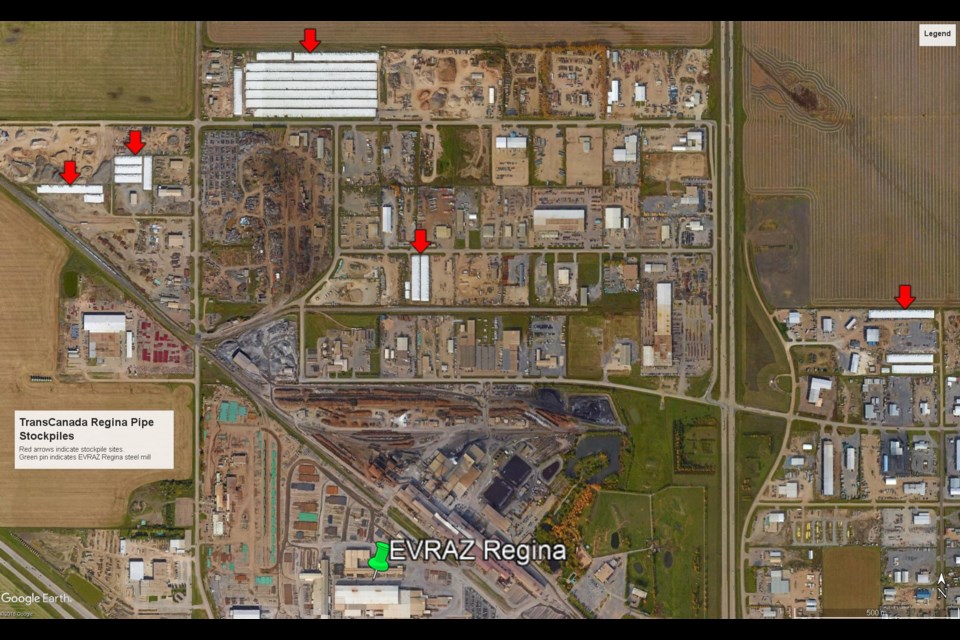Regina – In July 2011, the stringing trucks were driving through Shaunavon, taking 36-inch pipe trucked from the coating plant in Camrose to a storage yard south of the Shaunavon. And there it sat, to the end of the first President Barrack Obama term. Then it sat throughout the entirety of the second Obama term, when he killed the project by denying a presidential permit. It continued to sit since the election of President Donald Trump, who, in the week following his inauguration in January 2017, invited TransCanada to reapply for a presidential permit, which he then granted. This revived the project, but construction has not yet started.
The pipe sat even after that permit was granted, after Keystone XL legal odyssey continued. But finally, this past summer, the project started to gain some life to it. And it was then TransCanada started looking at its pipe stockpiles to see what it could use.
At the Saskatchewan Oil and Gas Supply Chain Forum in Regina on Oct. 4, representatives of TransCanada took part, explaining opportunities for businesses to become part of the company’s supply chain. Among those present was Doug Brunning, pipeline manager, Canada, for the Keystone XL project. He had previously worked on the now-cancelled Energy East project in a similar capacity.
Earlier in the day, Andrea Korney, supplier diversity and stakeholder relations with TransCanada, told the conference that TransCanada had begun pipe refurbishment for the project.
“We’re inspecting every piece of pipe,” Brunning told Pipeline News. “We have a whole test plan, 11 steps. We look at coating, we look at interior, we look for corrosion. We look at everything – cleanliness, all that other stuff. It either passes or it fails. If it fails, then it’s scrap. And there may be others where we may be able to remediate it.”
“In other cases, if we find measurements of the coating thickness are too thin, we set them aside for a strip and recoat,” Brunning said.
“At this point, all we’re doing is inspecting the pipe. After we’ve done the inspection and see how much pipe we have, we will see If we, in fact, need the strip-and-recoat pipe for the project.”
Asked why the amount in the stockpiles wouldn’t match the amount needed, he explained, “Keystone XL doesn’t own this pipe. TransCanada owns it. The asset gets transferred.
“TransCanada had 400 kilometres that was going to go to the U.S., that’s not going to the U.S. now. We can use that pipe, here in Regina, for Canada.”
He wouldn’t say if that was related to recent steel and pipe tariffs imposed by the Donald Trump administration.
The industrial north end of Regina has had large stockpiles of pipe, painted white, tucked into numerous yards for many years. They’ve been there long enough to appear at five different sites on Google Earth, dating back to 2011. Imagery from October of that year showed the stockpiles in transition, from the common green coating, to a protective white paint.
“It’s still there,” he noted. “It’s TransCanada pipe that wasn’t used on other projects. It’s available for us to use.”
The largest stockpile, on Sherwood Road, covers an area of several city blocks.
“That pipe is for us to use. Some of the pipe, in the other stockpiles sites in Canada, was taken from those stockpile sites, to be used on other projects. So we can use the Regina stockpile to replenish.
“Whether or not we strip and recoat, we’re not sure yet. And if we did, it would be next year. For you to do that program, you have to be finished all your inspection first, before the coating mill has to change their whole process.”
It can’t be done on site, meaning the pipe to be recoated would have to be transported back to a plant, stripped, recoated, and sent back to the line again before usage.
“This would be in a plant environment,” he said, when asked if recoating could happen in the field.
Some of the pipe had been used on other projects, he noted, as 36-inch is the most popular size.
“We expect that after the inspection program, there will still be pipe left over that we will not need.”
Asked when is the soonest construction might start in Saskatchewan, such as topsoil stripping, he replied, “Our plan is to start mid-next year. We’ll do all the mitigation measures that we need to with regards to migratory birds to be able to start.”




